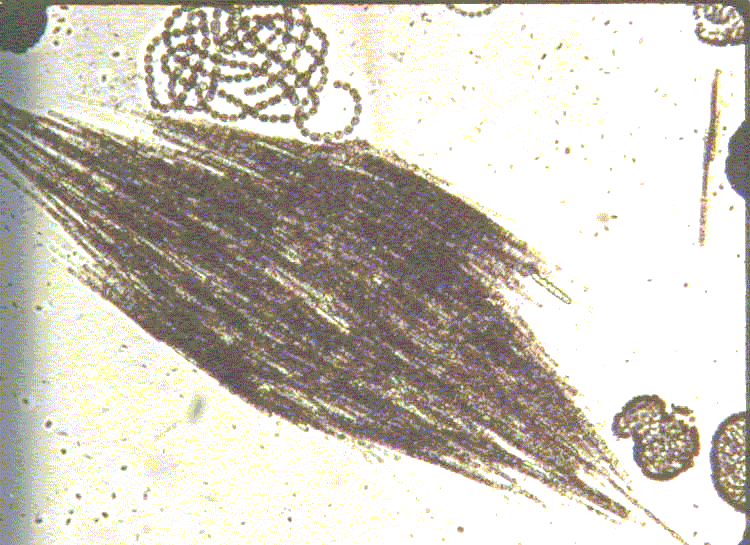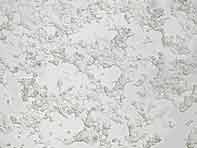Other Analyses
For testing information, please call WSLH Customer Service at 800-442-4618.
 Algae Identification
Algae Identification
The lab has the capability to identify freshwater algae in surface water samples.
Cyanobacteria Toxins
The WSLH can screen for various toxins in samples collected from surface waters and drinking waters.
Screening Tests
- Microcystin ELISA
- Cylindrospermopsin ELISA
- Saxitoxin ELISA
- Anatoxin-a ELISA
More Information on Cyanobacteria
Wisconsin Department of Natural Resources http://dnr.wi.gov/lakes/bluegreenalgae/
Wisconsin Department of Health Services https://www.dhs.wisconsin.gov/water/bg-algae/index.htm
EPA https://www.epa.gov/cyanohabs
Aquatic Invasive Species Identification
The lab has the capability to identify aquatic invasive species (AIS) including Dreissenid mussel veligers and Spiny waterfleas collected in surface water samples.
Sediment Bioassays
These bioassays determine the chronic effects of exposed organisms to sediment. Organisms used are Hyalella azteca and Chironomus dilutus.
Microtox
Microtox is an acute toxicity test using luminescent marine bacteria to determine possible toxicity in a sample. Toxicity results in a reduction in light emitted by the bacteria. Samples can be analyzed and results known in less than two hours.
E-Screen and A-Screen Assays
The E-screen is a cell-culture based assay in which cells from a breast cancer cell line (MCF-7 cells) are exposed to specific compounds or environmental extracts. Because this cell line proliferates in response to estrogens, compounds that cause proliferation are considered estrogenic. The assay is very sensitive; detectable proliferation occurs in the picoMolar range of estradiol.
The A-screen is an assay using MCF-7 cells that have been transfected with the androgen receptor. These cells will respond to androgens (such as testosterone) by inhibiting proliferation.
click above for larger image
Estrogen/Androgen Receptor Yeast Assays
The yeast assays are another tool used to assess potential impacts to the endocrine system. Yeast cells are transformed to contain human estrogen and androgen receptors with corresponding reporter genes. The assays can be used to characterize whether chemicals or samples elicit estrogenic or androgenic responses.

